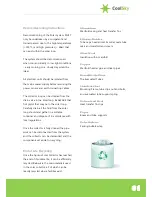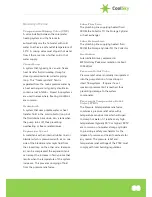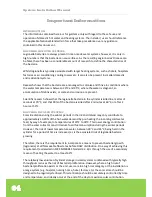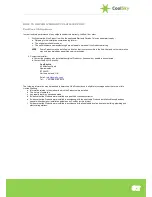
61
Decommissioning Instructions
Decommissioning of the Solar System MUST
only be undertaken by a competent and
trained person due to the high temperatures
(>150 ºC) and high pressures (> 6bar) that
can exist within the solar loop.
The system should be decommissioned
when cool and ideally in low light conditions
– early morning on a cloudy day would be
ideal.
All electrical units should be isolated from
the mains power supply before removing the
power, sensor and earth connecting cables.
The collector loop can be drained from the
drain valve in the solar loop. Be AWARE that
hot glycol that may be in the solar loop.
Carefully drain all the fluid from the solar
loop should and gather in a suitable
container and dispose of in accordance with
local regulations.
Once the collector is fully drained the pipe-
work can be disconnected from the system
and the collector can be dismantled and the
components set aside for recycling.
End of Life Recycling
Once the Apricus Solar Collector has reached
the end of its usable life, it can be efficiently
recycled. Below are the main materials used
in the solar collector, all of which can be
readily recycled where facilities exist.
Aluminium
Manifold casing and heat transfer fins
Silicone Rubber
Tube caps, header inlet & outlet seals, tube
seals and manifold end covers
Glass Wool
Insulation within manifold
Copper
Manifold header pipe and heat pipes
Borosilicate Glass
The Evacuated Tubes
Stainless Steel
Mounting Frame, tube clips, nut and bolts,
and evacuated tube support spring
Galvanized Steel
Heat transfer fin clips
Paper
Boxes and tube supports
Polyethylene
Packing bubble wrap








































